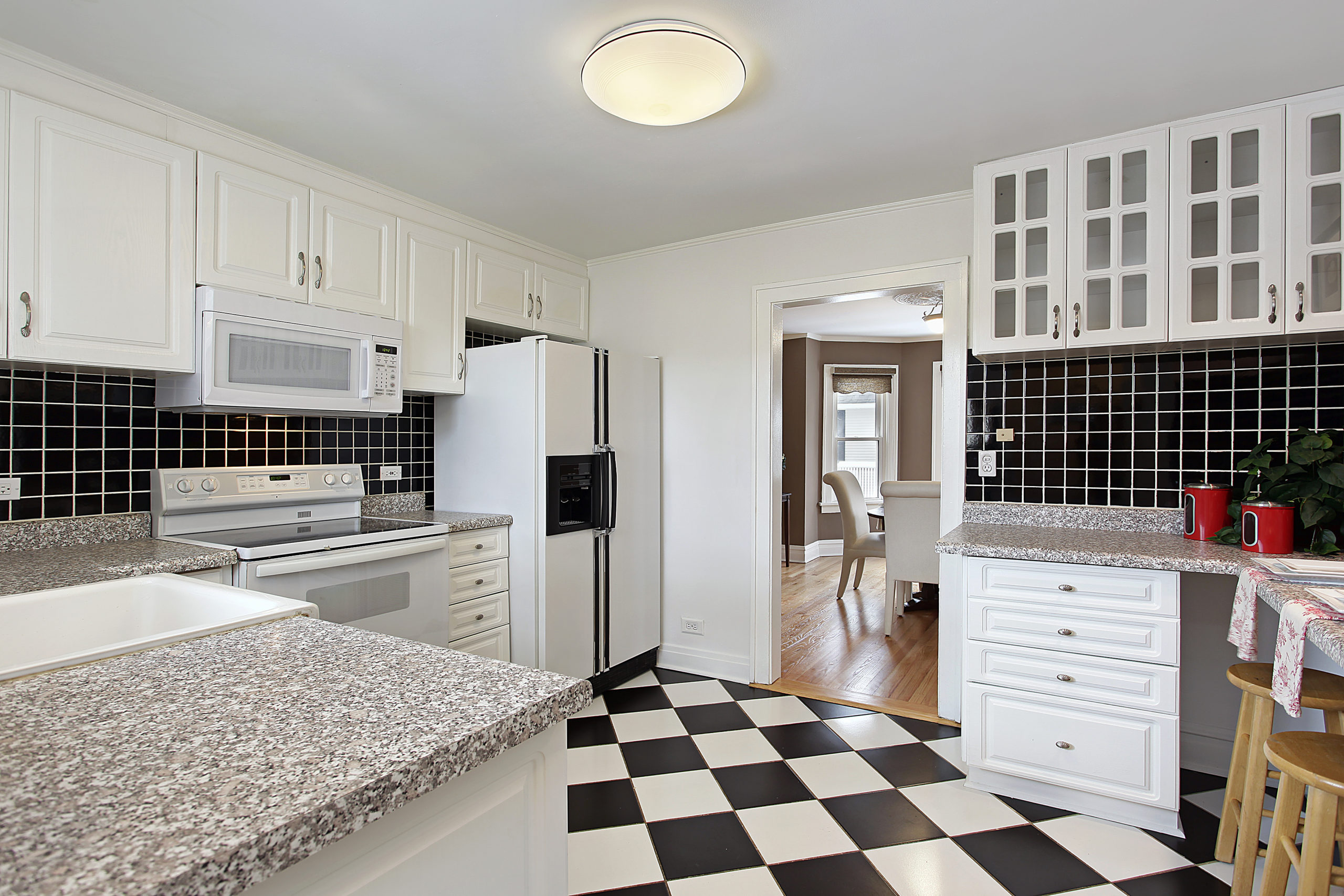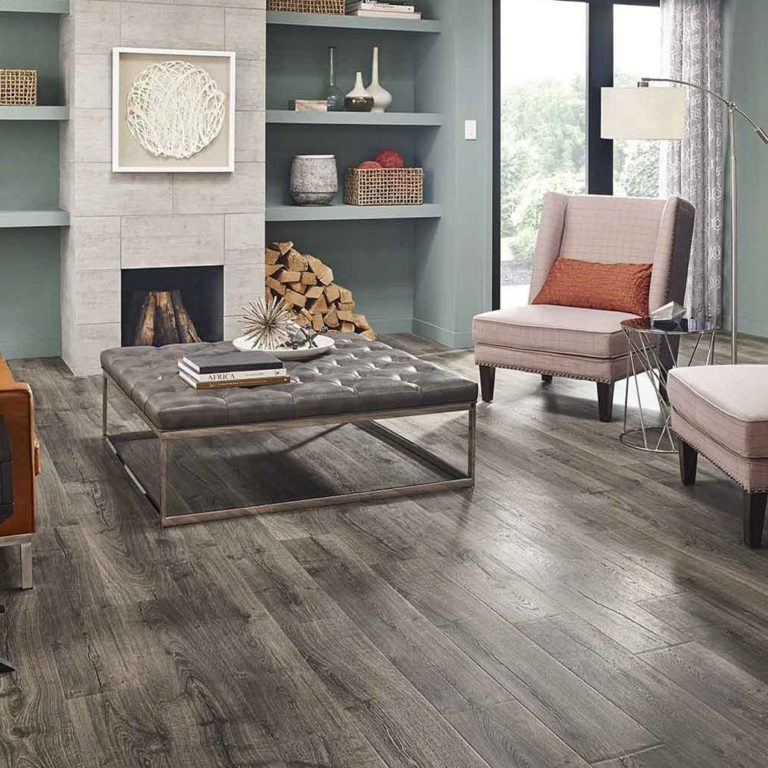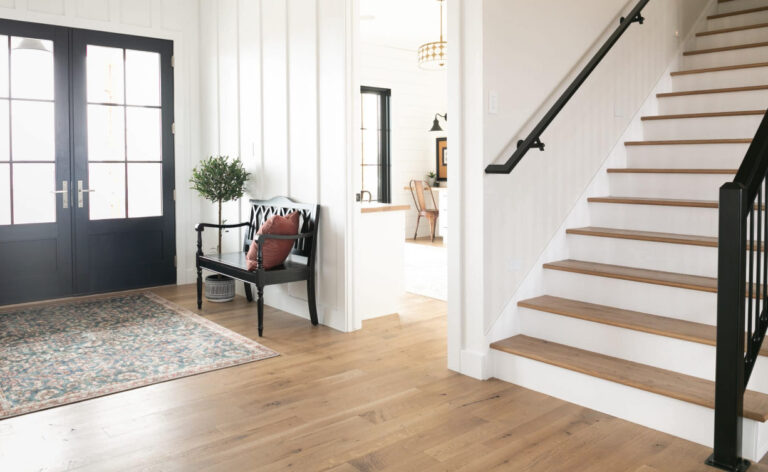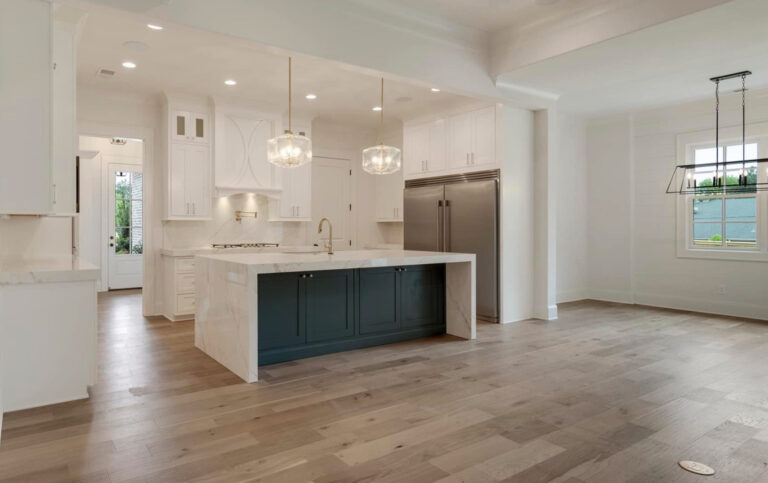When it comes to picking out the right flooring for your kitchen, you want a product that looks great, is easy to maintain, and can withstand spills and foot traffic. That’s why luxury vinyl planking (LVP) flooring is an excellent choice for the heart of your home.
Not only is LVP flooring durable and low maintenance, but it also offers a wide variety of styles and colors to match any kitchen design or kitchen remodel. In this blog, we’ll explore the features that make LVP flooring ideal for your kitchen, tips for choosing and installing it, and frequently asked questions about LVP kitchen flooring.
LVP Flooring Features that are Ideal for Kitchens
It can be hard to choose the right floor for your kitchen, especially since kitchens often get lots of traffic and have spills and other messes. But with its unique features and benefits., LVP flooring is a durable, low-maintenance, and aesthetically pleasing flooring option for kitchens. Here are a few reasons to choose this floor material for your space.
Waterproof and Moisture Resistant
One of the biggest challenges with kitchen flooring is moisture. Spills, leaks, and high humidity levels can quickly damage some flooring materials. LVP flooring, however, is completely waterproof and moisture-resistant, making it perfect for kitchens. Its waterproof core stops liquids from seeping through the floor, preventing mold and mildew growth. This also makes LVP an excellent option for bathrooms and laundry rooms, where moisture levels tend to be high.
Durability
Kitchens are high-traffic areas, and your flooring needs to be able to withstand daily wear and tear. LVP flooring is known for its durability and can last for many years. Its wear layer protects the floor from scratches, dents, and other forms of damage, ensuring a long-lasting and beautiful finish. Additionally, LVP flooring is resistant to fading and staining, so your kitchen floor will continue to look fresh and vibrant even after years of use.
Easy Installation
When it comes to installing new flooring, convenience matters. LVP flooring is designed for easy installation, with most brands offering a click-lock system that allows the planks to lock together seamlessly. This means you won’t need any special tools or adhesives for installation. In many cases, LVP can be installed directly over existing flooring, saving you time and effort in the process. It’s also easier to remove and replace damaged planks, making repairs a breeze.
Low Maintenance
Another great feature of LVP flooring is its low maintenance requirements. With just a simple sweep or vacuum, your floors will remain clean and debris-free. For deeper cleaning, a damp mop with a mild cleaner is all that’s needed to maintain the floor’s appearance. Unlike hardwood floors, there’s no need for polishing or refinishing, eliminating the need for costly and time-consuming maintenance.
Best Brands of 2024
Tips for Choosing and Installing Kitchen LVP Flooring
Once you’ve decided that LVP flooring is the right choice for your kitchen, it’s important to follow some key tips for choosing and installing your new floors. Let’s take a look at how to find the right LVP style for your kitchen, proper subfloor preparation, and whether to consider DIY or professional installation.
Finding the Right LVP Style for Your Kitchen
There is a wide variety of LVP styles available on the market designed to mimic the look of hardwood, stone, and even tile flooring. Start by considering the overall design of your kitchen and the look you want to achieve. Maybe you have stainless steel appliances and want something sleek, or maybe you need a floor color to match your quartz countertops or stone tiles. It’s always a good idea to order samples of multiple styles to see how they’ll look in your space. You may also want to consider the thickness and wear layer of the LVP, as thicker options will typically provide better durability and noise reduction.
Proper Subfloor Preparation
Before installing your LVP flooring, it’s essential to properly prepare the subfloor. The subfloor should be clean, dry, and level. In some cases, you may need to repair damaged areas, remove existing flooring, or use a leveling compound to create an even surface. Proper subfloor preparation is critical in ensuring a successful and long-lasting installation. Failure to do so can result in uneven flooring and potential damage to the LVP planks.
DIY vs. Professional Installation
One of the biggest decisions when it comes to LVP flooring installation is whether to tackle the project yourself or hire a professional. While LVP flooring is known for its easy installation, it’s essential to have some basic DIY skills and a good understanding of the installation process. If you’re unsure of your abilities or simply want peace of mind knowing the job is done right, hiring a professional installer is a wise investment. They’ll have the skill, tools, and experience needed to ensure a flawless finish.
Cleaning and Maintaining LVP Floors in the Kitchen
Keeping LVP flooring clean and well-maintained is essential for preserving its beauty and durability. Follow these tips to ensure that your kitchen LVP floors stay in excellent condition:
- Regular cleaning: Sweep or vacuum your LVP floors frequently to remove dirt and debris, which can cause scratches if left unattended. Use a soft-bristle vacuum attachment or a dry microfiber mop to avoid damage.
- Safe cleaning solutions: When mopping, make sure to use a damp (not soaking wet) mop or cloth and a cleaning solution designed specifically for LVP flooring. Avoid using abrasive cleaners, wax, or steam mops, as they might damage your floors.
- Spill management: Deal with spills and stains immediately to prevent lasting damage. Wipe spills with a soft cloth and use a gentle cleaner for more stubborn stains. Always rinse with clean water afterward and dry the area thoroughly.
- Furniture protection: Place felt pads under furniture legs to prevent scratches and dents on your LVP flooring. Avoid dragging heavy furniture or appliances across the kitchen floor – always lift and place them carefully.
- Preventative measures: Use doormats at entrances to minimize dirt and debris brought into your home. Additionally, keep your pet’s nails trimmed to reduce the risk of scratches on the floor.
Decor Kitchen Ideas with LVP Flooring
Now that we’ve reviewed some of the fundamentals of using LVP flooring in your kitchen, let’s explore some decor ideas you can use to spark inspiration.
1. White kitchen with a light-colored LVP floor – This combination is perfect for creating a clean and bright look in your kitchen. You can pair the white cabinets with a light gray or beige colored LVP floor to create a harmonious and elegant look.
2. Classic kitchen with dark LVP floor – A dark-colored LVP floor is perfect for creating a classic look in your kitchen. You can pair it with medium to dark-colored cabinets and create a warm, welcoming environment.
3. Rustic kitchen with distressed LVP floor – Distressed LVP flooring is perfect for creating a rustic look in your kitchen. You can pair it with wooden cabinets and create a natural environment.
4. Modern kitchen with a gray LVP floor – If you prefer a modern style, consider using a gray-colored LVP floor to match a contemporary look. Pair the floor with white or black cabinets for a sleek and stylish space.
5. Coastal kitchen with blue-toned LVP floor – Want to add some coastal beauty or a beachy feel to your kitchen? Try using a blue-toned LVP floor, and pair it with light-colored cabinets. These colors together help create peace and tranquility and are reminiscent of relaxing times spent at the beach.
6. Bold kitchen with patterned LVP floor – Make a bold statement with your kitchen using a patterned LVP floor. Depending on the manufacturer you work with, you can choose from various styles and choose appliances to match. Or, if you want a simpler kitchen that contrasts with the floor, try using a white backsplash and solid-colored appliances to create a unique style.
7. Bright kitchen with a yellow LVP floor – Yellow-colored LVP flooring is perfect for creating a bright and cheerful environment in your kitchen. Pair it with white or light-colored cabinets and create a fun and inviting space.
8. Farmhouse kitchen with a natural-colored LVP floor – Want your open-concept kitchen to be reminiscent of a farmhouse? Choose a natural-colored LVP floor and pair it with wooden cabinets and vintage décor, and create a cozy and warm space.
9. Minimalist kitchen with a black LVP floor – Minimalist looks are simple and sleek, and you can easily do this in your kitchen using black LVP flooring. Then, choose white or light-colored cabinets to create a stylish space that’s simple and elegant.
10. Eclectic kitchen with a multi-colored LVP floor – To create an eclectic and unique look, you can opt for a multi-colored LVP floor. Choose from various colors and create a vibrant space that’s true to your style. If you work with a professional LVP retailer and installer, you can work closely with this team to find a style you love.
Frequently Asked Questions
How long does LVP Flooring last in a kitchen?
LVP flooring is known for its durability and long-lasting quality. With proper installation and maintenance, it can last anywhere from 15 to 25 years, making it a wise investment for homeowners who want their kitchen flooring to stand the test of time.
The lifespan of LVP flooring depends on several factors, such as:
- The quality of the LVP – Higher-quality planks usually offer better warranties and are designed to withstand heavy foot traffic and various kitchen spills.
- The thickness of the wear layer – A thicker wear layer offers better protection against scratches, stains, and dents. Choose a wear layer at least 20 mils thick for maximum durability.
- Proper installation – Hiring a professional installer will ensure that your LVP flooring is installed correctly, which is vital for its longevity.
Can you use LVP Flooring with underfloor heating?
Yes, you can! LVP flooring is compatible with underfloor heating systems, making it a popular choice for homeowners who want to combine efficient heating with modern floor design in their kitchens. Consider the following tips when pairing LVP with underfloor heating:
- Ensure that the LVP flooring you choose is specifically designed to be used with underfloor heating. Check with the manufacturer to verify compatibility.
- Follow the manufacturer’s guidelines for installing LVP flooring over underfloor heating systems. This usually involves laying a compatible underlayment between the heating elements and the LVP planks.
Can you put a refrigerator on vinyl plank flooring?
Yes, you can put a refrigerator on vinyl plank flooring. However, make sure to properly prepare the large item by using protective pads and furniture sliders when you install the fridge. With proper preparation, there should be no problems placing your refrigerator on LVP flooring!
About The Author

Daniel Meeks
April 19, 2023
Daniel Meeks is a flooring expert with over 10 years of experience in the industry. Holding a BS in Marketing from Emerson College, Daniel has spent his professional career writing for some of the biggest names in interior design. In his spare time, Daniel enjoys hiking, baking, and hanging out with his dog, Artie.




